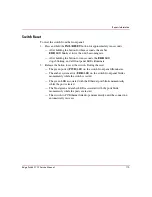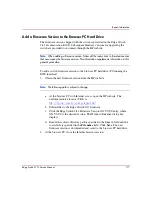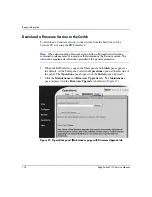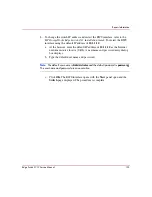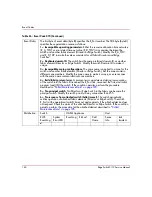
Optical Transceiver Removal and Replacement
127
Edge Switch 2/12 Service Manual
5. The optical transceiver has a wire locking bale to secure the transceiver in the
port receptacle and to assist in removal. The locking bale rotates up or down,
depending on the transceiver manufacturer and port location (top row,
odd-numbered ports 1 through 11, or bottom row, even-numbered ports 0
through 10).
a.
Disengage the locking mechanism by rotating the wire locking bale up or
down 90 degrees.
b.
Grasp the wire locking bale and pull the transceiver from the port
receptacle.
6. At the Web browser connected to the EWS interface, click the Log tab at the
Monitor panel. The Event Log displays. An event code 513 (SFP optics
hot-removal completed) displays in the log.
Replacement
To replace an SFP optical transceiver:
1. Remove the replacement transceiver from its packaging.
2. Insert the transceiver into the port receptacle, then engage the locking
mechanism by rotating the wire locking bale up or down 90 degrees.
3. Perform an external loopback test on the port. Refer to “
” on page 101 for instructions. If the test fails, go
” on page 32 to isolate the problem.
4. Reconnect the fiber-optic jumper cable:
a.
Remove the protective cap from the cable connector and the protective
plug from the port’s optical transceiver. Store the cap and plug in a suitable
location for safekeeping.
b.
Clean the jumper cable and transceiver connectors. Refer to “
” on page 111 for instructions.
c.
Insert the keyed LC cable connector into the port’s optical transceiver.
5. Ensure the amber LED adjacent to the port transceiver is extinguished. If the
amber LED is illuminated, go to “
” on page 32 to
isolate the problem.
6. At the Web browser connected to the EWS interface, click the Log tab at the
Monitor panel. The Event Log displays. Ensure an event code 510 (SFP
optics hot-insertion initiated) displays. If the event code does not appear in the
log, go to “
” on page 32 to isolate the problem.



